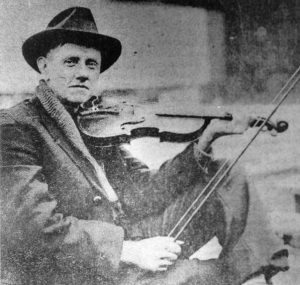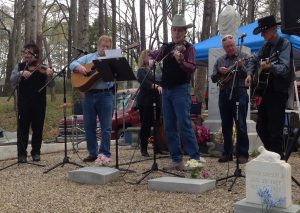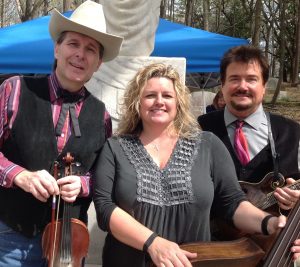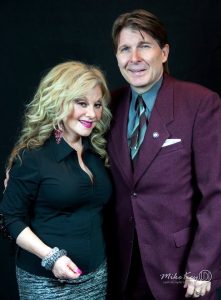Bluegrass artist Larry Cordle’s new CD “Give Me Jesus Now”
 Larry Cordle, a Kentucky Music Hall of Famer, is also a multi-award IBMA Award Winner, two-time Grammy nominee, and one of Nashville’s most revered Singer-Songwriters penning such hits as “Murder on Music Row” and “Highway 40 Blues.” His songs have been recorded by artists such as Ricky Skaggs, Alison Krauss, Rhonda Vincent, Garth Brooks, George Strait, Trisha Yearwood, Reba McEntire, Diamond Rio, Alan Jackson, Trace Adkins and many others.
Larry Cordle, a Kentucky Music Hall of Famer, is also a multi-award IBMA Award Winner, two-time Grammy nominee, and one of Nashville’s most revered Singer-Songwriters penning such hits as “Murder on Music Row” and “Highway 40 Blues.” His songs have been recorded by artists such as Ricky Skaggs, Alison Krauss, Rhonda Vincent, Garth Brooks, George Strait, Trisha Yearwood, Reba McEntire, Diamond Rio, Alan Jackson, Trace Adkins and many others.
He rounded up some of his closest friends to bring the album to life. He is joined by Carl Jackson, Jerry Salley, Val Storey, Don Rigsby, Bradley Walker, Lethal Jackson Angie La Primm and Gail Mayes on vocals.
“I’ve been working on this new gospel album for about a year and a half,” he said. “I had to practically stop working on it while I was undergoing chemo for my leukemia, which by the grace of God is now in remission. I want to thank you all for the prayers sent up for me during and since my treatment.”
Cordle and Larry Shell wrote three songs on the album including one of the stand out tracks “The Old Thing’s Walkin’ About.”
Shell wrote on the liner notes, “The Lord, knowing that Larry is a songwriter, gave him the words and melodies to many of these songs. In fact, if you listen to this collection, you will literally hear Larry’s personal testimony of his strong and enduring faith.”
“The Lonesome Road” includes lead vocals by Carl Jackson’s dad, Lethal Jackson and also “God Had A Hand In It,” written by Carl Jackson and Jerry Salley, featuring guest vocalists Carl Jackson, Jerry Salley, Bradley Walker and Chris Latham.
He tours and records with his band Lonesome Standard Time, performs with as a Trio with Carl Jackson and Jerry Salley, and performs every Monday night for New Monday at the Station Inn in Nashville with Val Storey, Carl Jackson and more friends. In addition to his songwriting and role as a bandleader, Cordle is sometimes featured as a lead and/or background vocalist on some of Nashville’s most awarded and popular music. He’s provided harmony vocals for artists such as Garth Brooks, Blake Shelton, Bradley Walker, Billy Yates, Rebecca Lynn Howard and co-writing pal, Jerry Salley.
His lead and harmony singing is featured on Livin, Lovin, Losin: A Tribute to the Louvin Brothers, which won a GRAMMY for Best Country Album in 2003 and the 2004 IBMA Recorded Event of the Year Award. He’s also featured on two tracks of Moody Bluegrass, alongside artists such as Tim O’Brien, Alison Krauss, John Cowan, Harley Allen and again featured as lead vocalist on Moody Bluegrass II.
Please visit larrycordle.com or purchase it at iTunes, Amazon and more retail outlets. Follow him on Facebook and Twitter.


 I have been blessed to be inspired by and to know both of these American icons.
I have been blessed to be inspired by and to know both of these American icons.
 The live set, recorded at the legendary New York City nightspot on June 12, 2002, features many of Stanley’s signature songs, including “Man of Constant Sorrow,” “Pretty Polly,” and “O Death,” which opens the set. For such a prestigious performance, Stanley carried nothing but the best line-up of musicians with him, with Stuart Duncan (violin), Mike Compton (mandolin), James Shelton (guitar), Dennis Crouch (bass) all lending their award-winning talents to the night’s performance.
The live set, recorded at the legendary New York City nightspot on June 12, 2002, features many of Stanley’s signature songs, including “Man of Constant Sorrow,” “Pretty Polly,” and “O Death,” which opens the set. For such a prestigious performance, Stanley carried nothing but the best line-up of musicians with him, with Stuart Duncan (violin), Mike Compton (mandolin), James Shelton (guitar), Dennis Crouch (bass) all lending their award-winning talents to the night’s performance. He had stepped out of the studio from where they were filming their popular top-rated TV show as best I recall. We stood and passed the time and began a friendship that continues. I was excited to hear he has just completed an all-new recording,
He had stepped out of the studio from where they were filming their popular top-rated TV show as best I recall. We stood and passed the time and began a friendship that continues. I was excited to hear he has just completed an all-new recording, 



 Known widely as the manager for Hank Williams, Jr., his career intertwined with some of country’s greatest names and those branches of his experience are explored in a new book
Known widely as the manager for Hank Williams, Jr., his career intertwined with some of country’s greatest names and those branches of his experience are explored in a new book 
 Randall Franks made a special musical appearance with friend, country music star and former film co-star Stella Parton at her appearance for the Catoosa County Chamber of Commerce in Ringgold, Ga. in February 2017.
Randall Franks made a special musical appearance with friend, country music star and former film co-star Stella Parton at her appearance for the Catoosa County Chamber of Commerce in Ringgold, Ga. in February 2017.